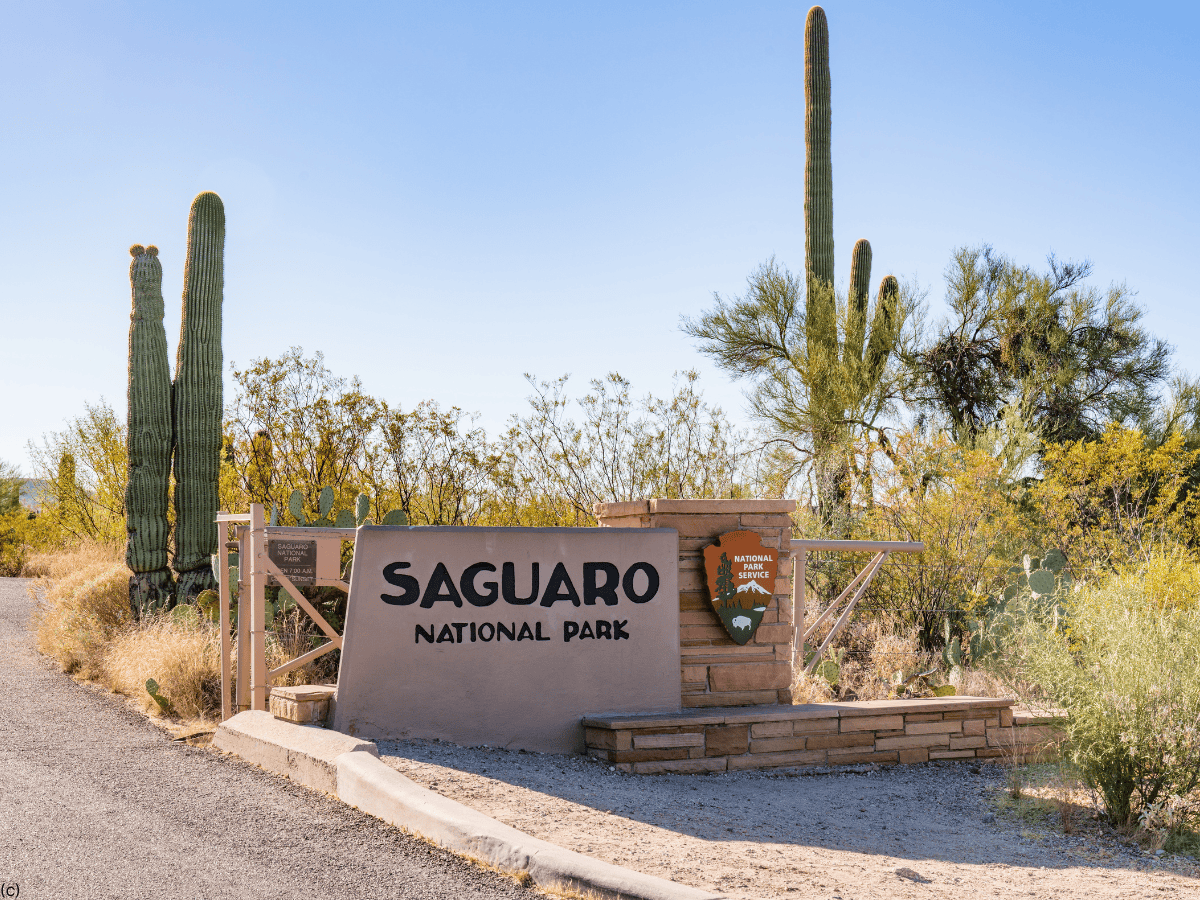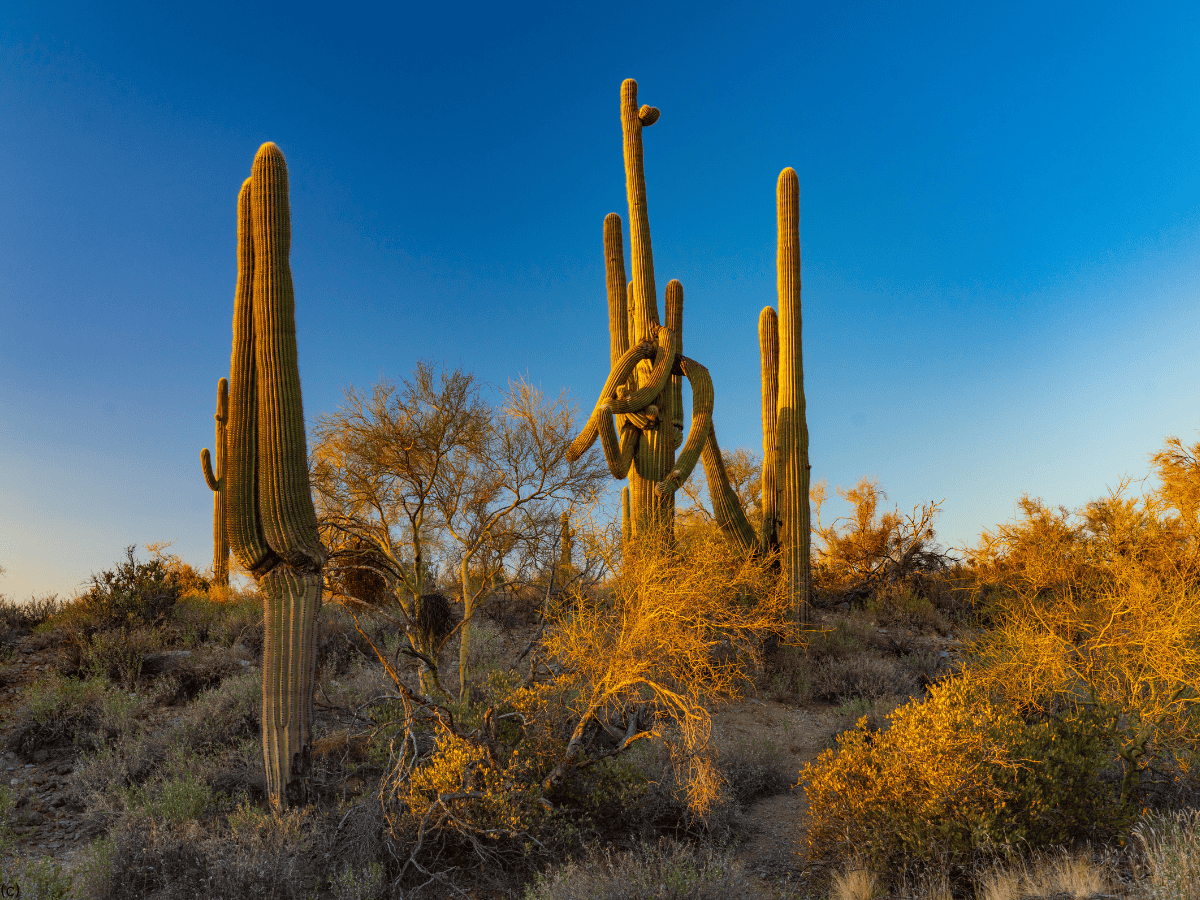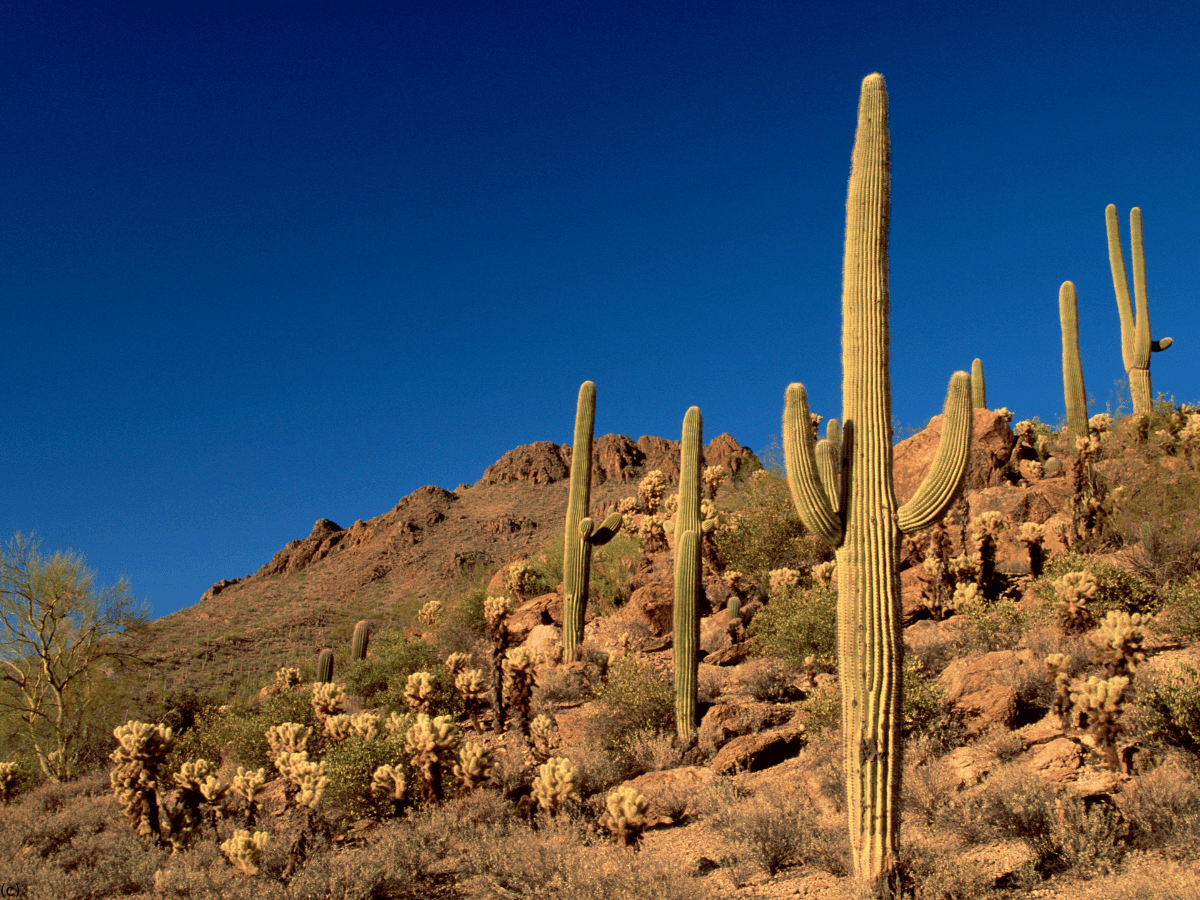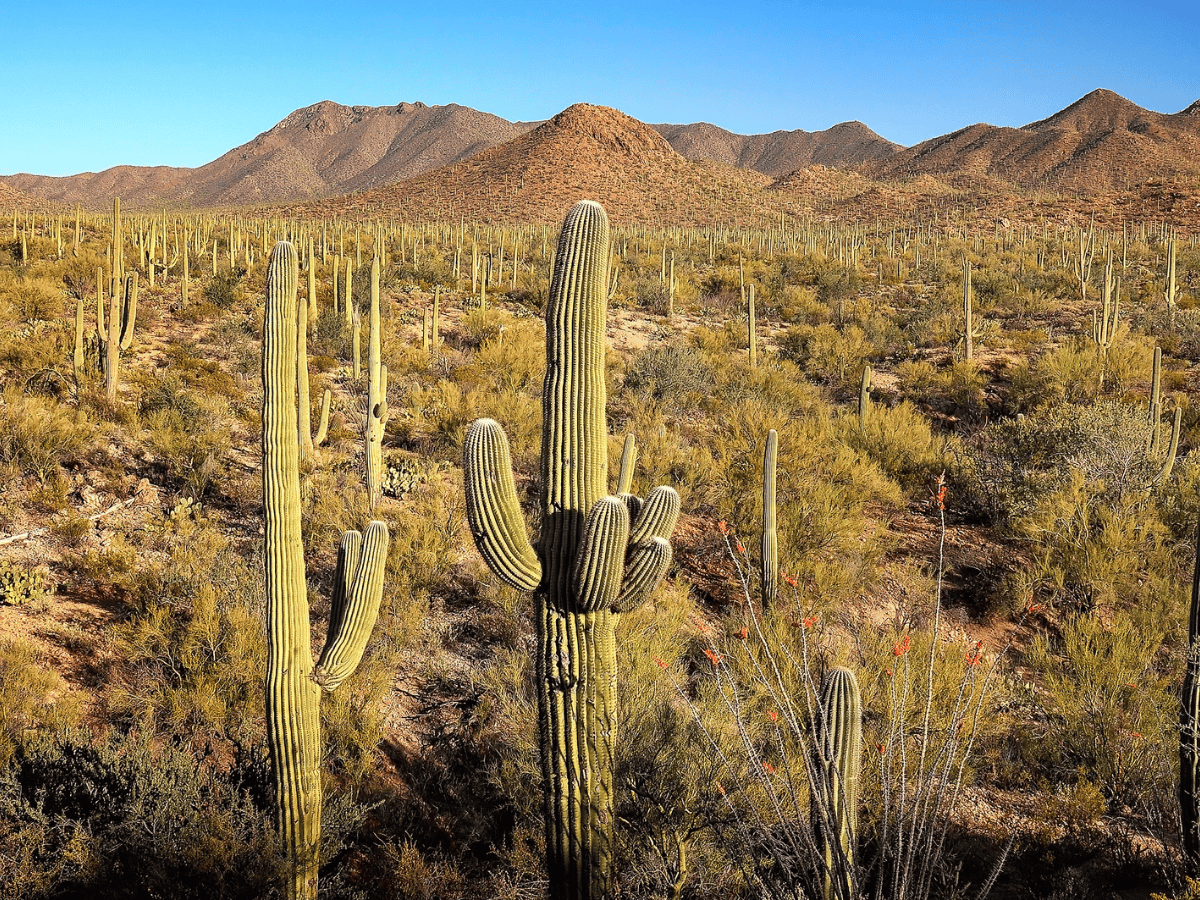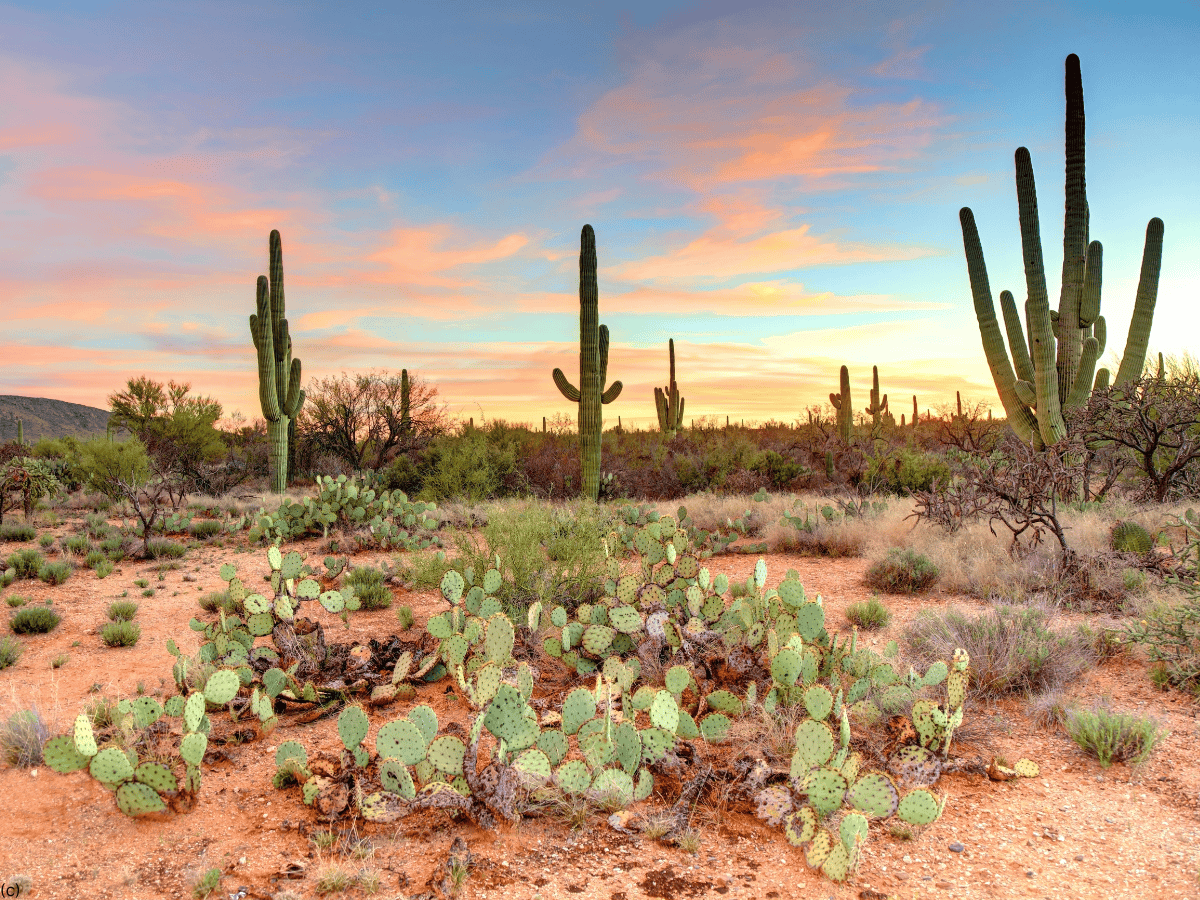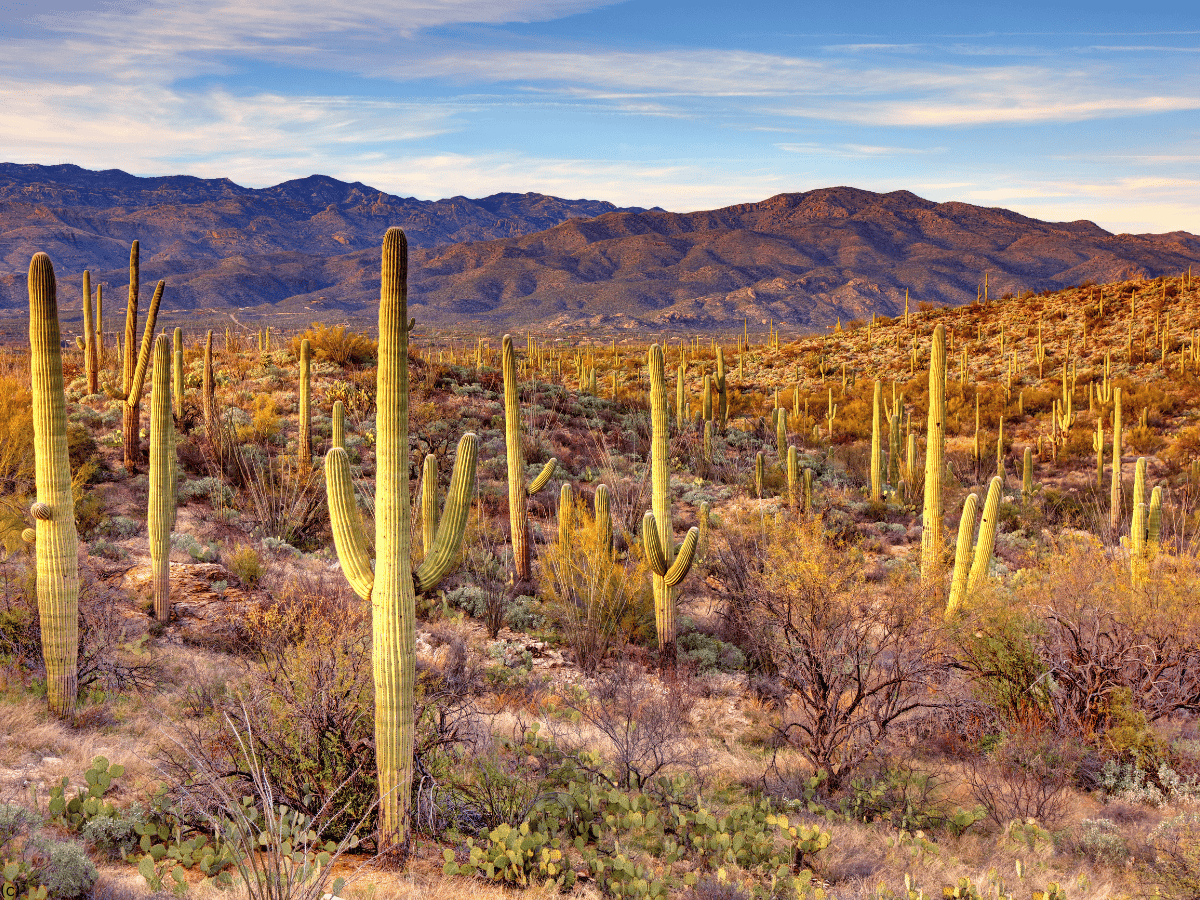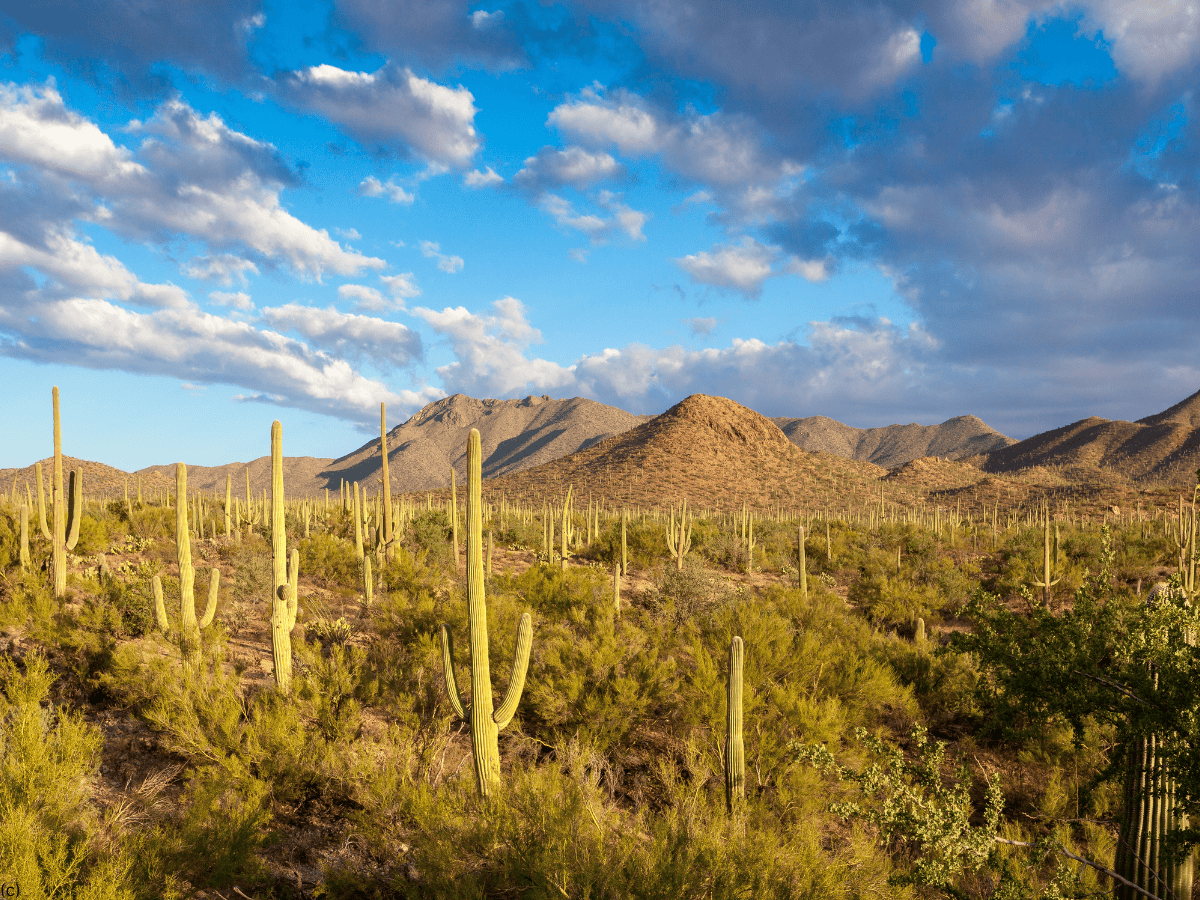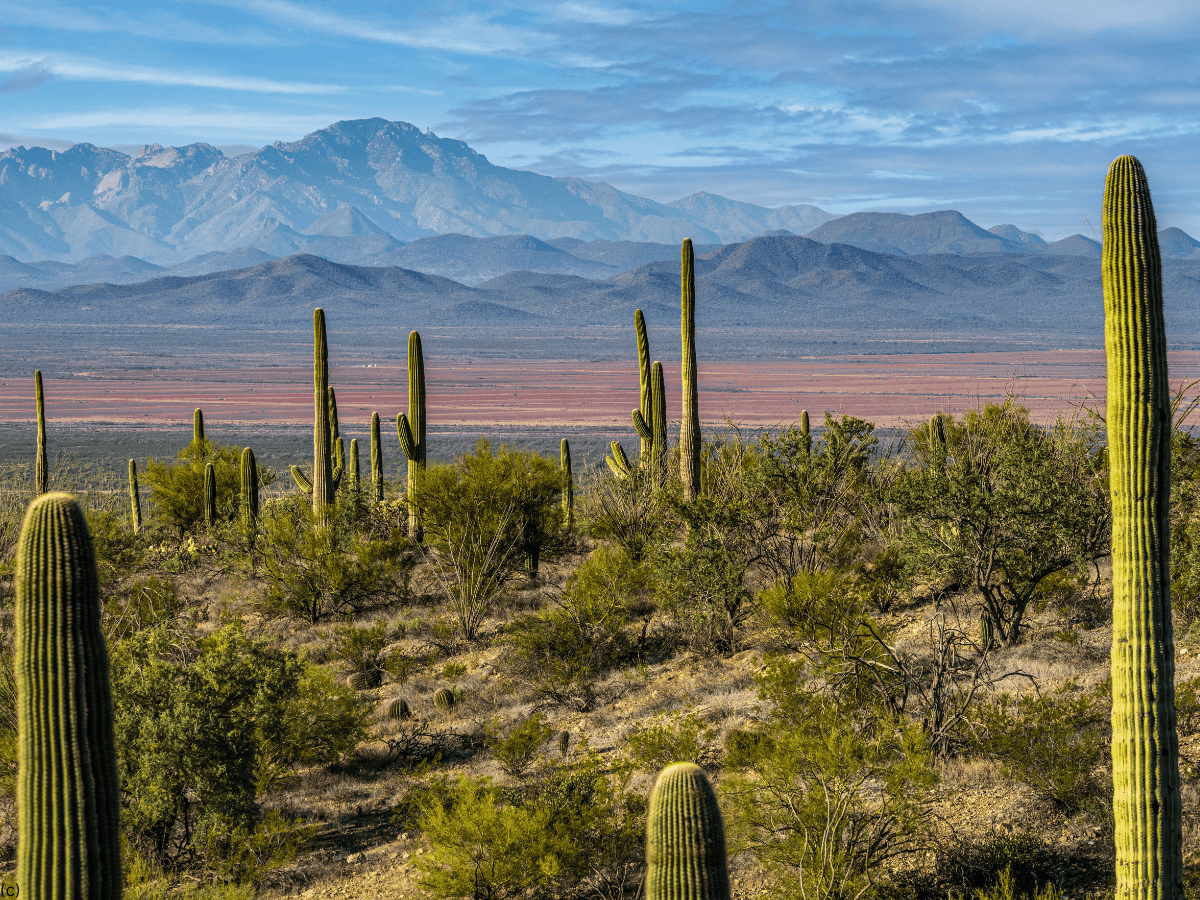
Nestled in the heart of the Sonoran Desert, Saguaro National Park stands as a testament to the beauty and resilience of the desert landscape. Located in southern Arizona, near the city of Tucson, the park is named after its most iconic resident, the giant saguaro cactus. These towering cacti, which can live for over 200 years and grow up to 60 feet tall, are emblematic of the American Southwest. Saguaro National Park is split into two districts: the Rincon Mountain District to the east of Tucson and the Tucson Mountain District to the west. Each offers unique landscapes, diverse wildlife, and a variety of recreational opportunities for visitors. This article explores the park’s natural wonders, history, wildlife, and tips for making the most of your visit.
The Iconic Saguaro Cactus
The saguaro cactus (Carnegiea gigantea) is the largest cactus in the United States and a symbol of the Southwest. These cacti are unique to the Sonoran Desert, thriving in its hot, dry climate. A mature saguaro is a sight to behold, with its thick, columnar trunk and upward-reaching arms. Saguaros are incredibly slow-growing; they may only reach 1 to 1.5 inches in height after ten years. It can take up to 75 years for a saguaro to grow its first arm, which is vital for reproduction as the arms increase the plant’s ability to produce flowers and fruit.
The saguaro’s life cycle is closely tied to the desert’s rhythm. They bloom in late spring, producing large, white flowers that open at night and close by the next afternoon. These flowers are pollinated by bats, birds, and insects. In summer, the saguaro bears red fruit that provides essential food for desert animals. Saguaros also offer shelter; their cavities, often created by woodpeckers, become homes for various birds and other creatures.
Park Geography and Ecosystems
Saguaro National Park encompasses over 91,000 acres of diverse desert and mountain terrain. The two districts of the park offer distinct experiences:
Rincon Mountain District (East): This district is characterized by its rugged mountains, deep canyons, and a variety of vegetation zones. As you ascend the slopes of the Rincon Mountains, the landscape transitions from saguaro-dominated desert to oak woodlands and pine forests. The highest point, Mica Mountain, rises to 8,666 feet, offering a cooler, forested retreat from the desert heat.
Tucson Mountain District (West): This district is more accessible and features a dense saguaro forest set against a backdrop of stunning desert vistas. The Tucson Mountains are lower in elevation but offer dramatic scenery, with numerous hiking trails that weave through the cacti and rocky outcrops. This area is particularly noted for its spectacular sunsets, which paint the sky in vivid hues of orange and pink.
Both districts are part of the Sonoran Desert, one of the most biologically diverse deserts in North America. The park’s varied ecosystems support a wide range of plant and animal species, adapted to survive in this harsh environment.
Wildlife in Saguaro National Park
Saguaro National Park is a haven for wildlife, with over 200 species of animals calling it home. The park’s diverse habitats support mammals, birds, reptiles, and amphibians.
Mammals: Visitors might spot javelinas (collared peccaries), coyotes, bobcats, and mule deer. The elusive mountain lion also roams the park, although sightings are rare. Smaller mammals, such as ground squirrels and kangaroo rats, are more commonly seen.
Birds: The park is a birdwatcher’s paradise, with over 100 species recorded. Gila woodpeckers, cactus wrens, and Harris’s hawks are among the notable residents. During migration seasons, the park attracts a variety of warblers, flycatchers, and other songbirds. Birds of prey, including golden eagles and great horned owls, can also be observed.
Reptiles and Amphibians: The Sonoran Desert’s warm climate is ideal for reptiles. The park is home to several species of lizards, including the colorful desert spiny lizard and the large, venomous Gila monster. Rattlesnakes, such as the western diamondback, are also present. Amphibians are less common but include species like the Sonoran Desert toad, which emerges during the summer monsoon season.
Invertebrates: The desert teems with invertebrates, from butterflies and moths to scorpions and tarantulas. The giant desert centipede and the velvet ant (actually a type of wasp) are among the more striking species.
History and Culture
The history of Saguaro National Park is rich and varied, reflecting the long human presence in the region. Indigenous peoples, including the Hohokam and Tohono O’odham, have lived in the Sonoran Desert for thousands of years. They developed sophisticated agricultural practices, utilizing the scarce water resources to grow crops like corn, beans, and squash.
Evidence of their presence can be found in petroglyphs scattered throughout the park, especially in the Tucson Mountain District. These ancient rock carvings offer a glimpse into the spiritual and daily lives of the region’s early inhabitants.
The arrival of Spanish explorers in the 16th century marked the beginning of significant changes. Missionaries established missions, and the introduction of European livestock and crops altered the landscape. The area later became part of Mexico before being acquired by the United States in the mid-19th century.
In the early 20th century, conservationists recognized the need to protect the unique saguaro cactus and its habitat. Saguaro National Monument was established in 1933, and in 1994, it was designated as Saguaro National Park, ensuring the preservation of this remarkable ecosystem for future generations.
Recreation and Visitor Experience
Saguaro National Park offers a wide range of recreational activities that cater to nature enthusiasts, hikers, and those seeking solitude in a stunning natural setting.
Hiking: The park boasts over 165 miles of trails, ranging from easy walks to challenging backcountry routes. Some popular hikes include:
- Valley View Overlook Trail (West): A short, easy hike offering panoramic views of the saguaro-studded landscape.
- Signal Hill Trail (West): An easy walk leading to a hilltop adorned with ancient petroglyphs.
- Cactus Forest Loop Drive (East): A scenic 8-mile loop with several trailheads, including the Desert Ecology Trail, which provides an informative self-guided tour of desert life.
- Rincon Peak Trail (East): A strenuous hike to the summit of Rincon Peak, offering breathtaking views of the surrounding mountains and desert.
Scenic Drives: Both districts have scenic drives that allow visitors to experience the beauty of the park from the comfort of their vehicles. The Cactus Forest Drive in the east and the Bajada Loop Drive in the west offer numerous pullouts for photography and short walks.
Ranger Programs: The park offers a variety of ranger-led programs, including guided hikes, interpretive talks, and stargazing events. These programs provide insights into the park’s natural and cultural history.
Camping: Backcountry camping is available in the Rincon Mountain District, offering a true wilderness experience. Campers must obtain a permit and be prepared for the challenges of desert camping. There are no developed campgrounds within the park, but nearby public and private campgrounds provide alternatives.
Wildlife Viewing: Early mornings and late afternoons are the best times for wildlife viewing. Visitors might see javelinas, deer, and a variety of bird species. Binoculars and patience are essential for spotting some of the more elusive animals.
Photography: The park’s dramatic landscapes, vibrant sunsets, and iconic cacti provide endless opportunities for photography. The golden light of early morning and late afternoon is ideal for capturing the beauty of the desert.
Conservation and Research
Saguaro National Park is not only a place of recreation but also a center for scientific research and conservation. The National Park Service works diligently to protect and preserve the park’s natural and cultural resources.
Research: Scientists conduct ongoing research on various aspects of the park’s ecosystem, including saguaro population dynamics, climate change impacts, and wildlife behavior. This research helps inform management decisions and ensures the long-term health of the park.
Conservation Efforts: Efforts to control invasive species, restore native vegetation, and manage visitor impact are crucial to maintaining the park’s ecological balance. Education and outreach programs aim to foster a sense of stewardship among visitors and the local community.
Climate Change: Like many natural areas, Saguaro National Park faces challenges from climate change. Increasing temperatures and changes in precipitation patterns can affect the health of saguaros and other desert species. Park staff are actively monitoring these changes and developing strategies to mitigate their impact.
Tips for Visiting Saguaro National Park
To make the most of your visit to Saguaro National Park, consider the following tips:
- Plan Your Visit:
- Check the weather forecast and plan for the heat. Summer temperatures can exceed 100°F (38°C), so visit during the cooler months if possible.
- Bring plenty of water, sunscreen, a hat, and sturdy footwear.
- Respect the Environment:
- Stay on designated trails to protect fragile desert vegetation.
- Do not disturb wildlife or collect plants, rocks, or artifacts.
- Pack out all trash and leave no trace.
- Safety:
- Be aware of your surroundings and watch for rattlesnakes and other wildlife.
- Inform someone of your plans if you are hiking alone and carry a map and compass or GPS.
- Visitor Centers:
- Stop by the visitor centers in both districts to obtain maps, information, and permits. The staff can provide valuable insights into current conditions and recommend activities.
- Timing:
- Visit early in the morning or late in the afternoon to avoid the heat and increase your chances of seeing wildlife.
- Photography:
- Bring a camera or smartphone to capture the stunning landscapes. Sunrise and sunset are the best times for photography.
Saguaro National Park is a captivating destination that showcases the beauty and diversity of the Sonoran Desert. Its towering saguaros, rugged mountains, and rich wildlife create a unique and unforgettable experience for visitors. Whether you’re hiking through saguaro forests, exploring ancient petroglyphs, or simply enjoying the tranquility of the desert, the park offers something for everyone. As you explore Saguaro National Park, take the time to appreciate the intricate balance of life in this arid landscape and the efforts to preserve it for future generations.
